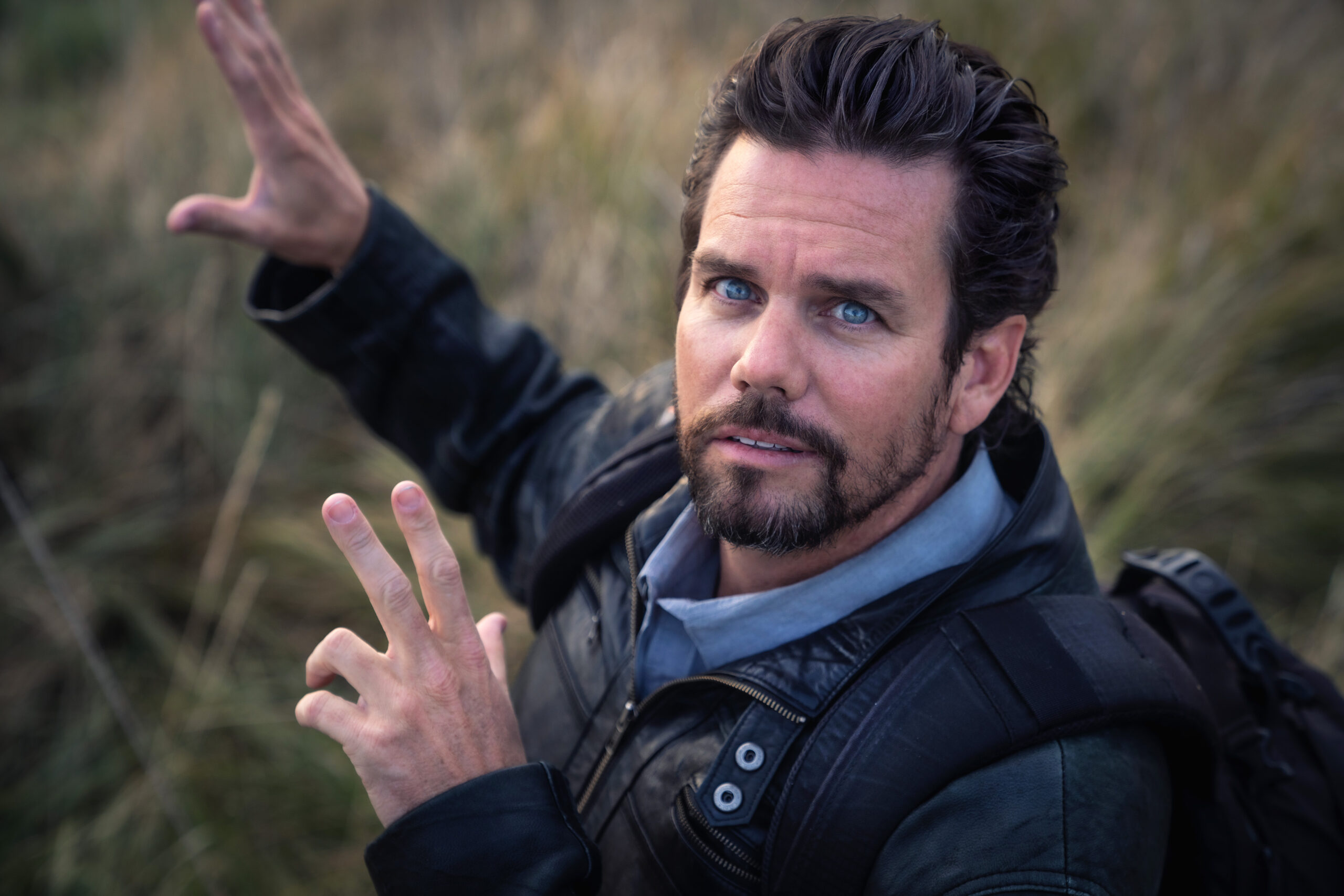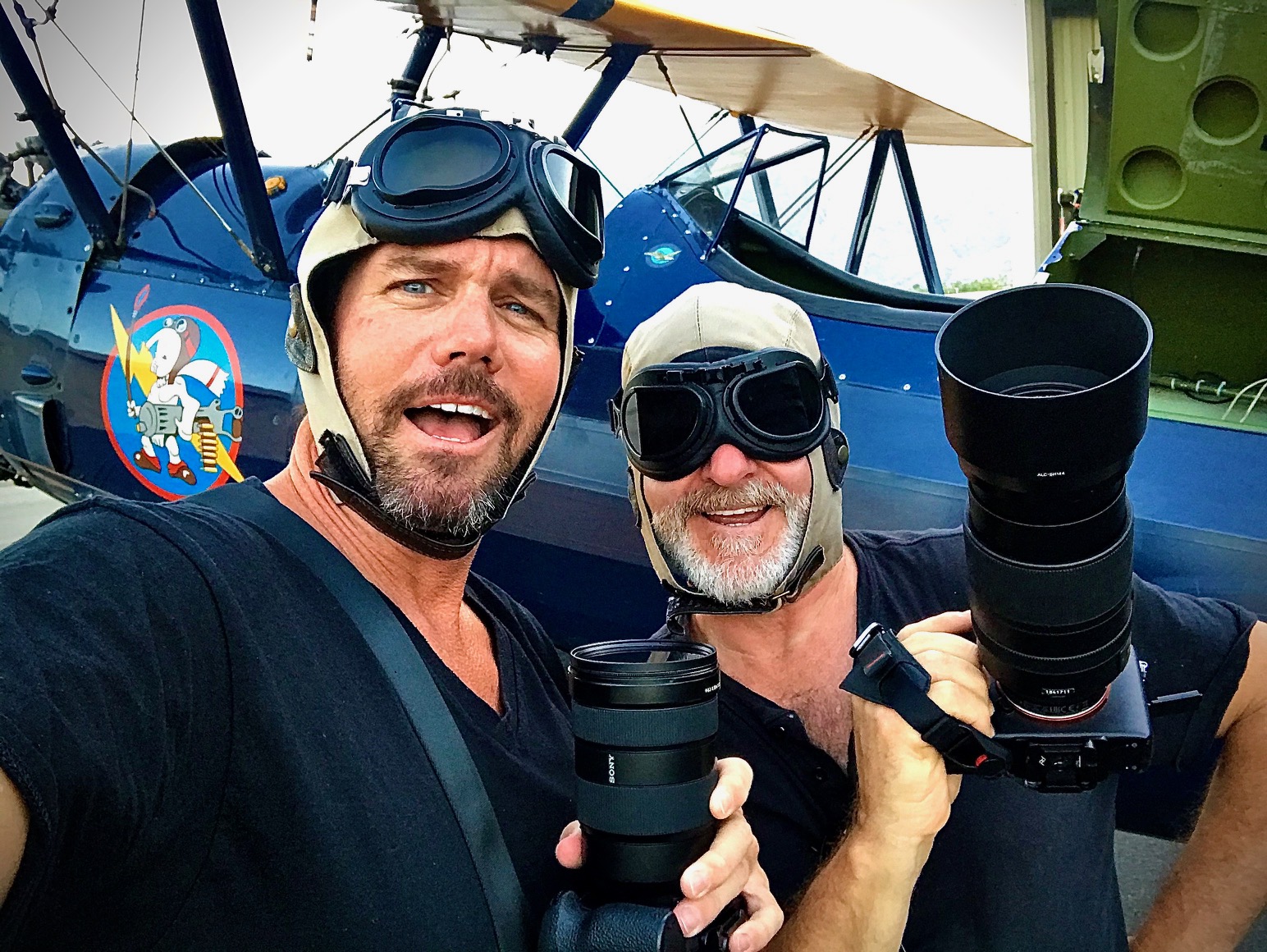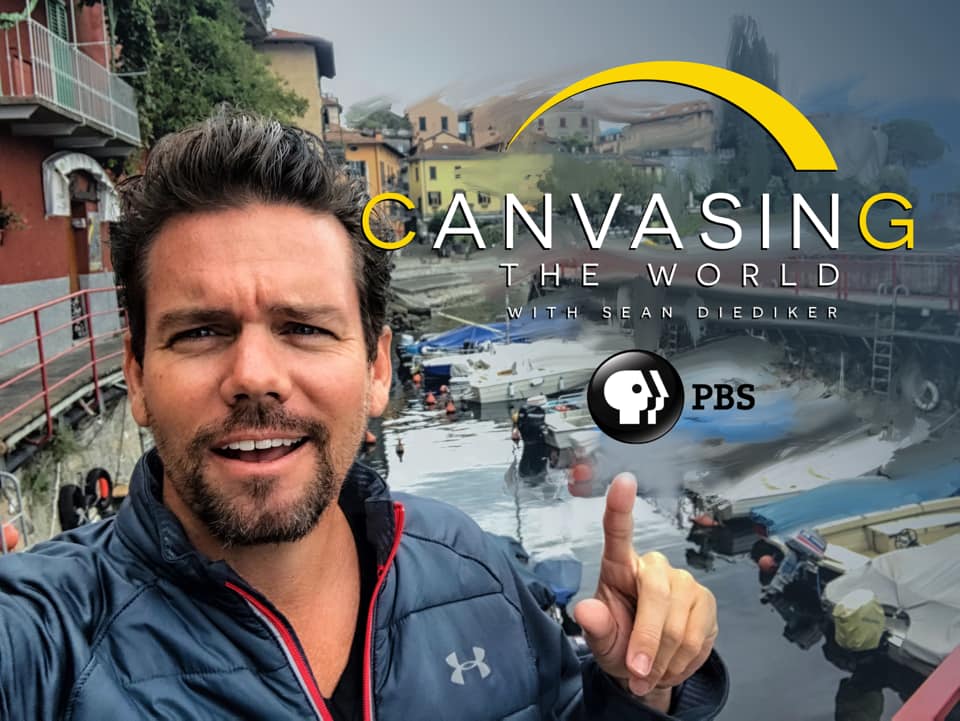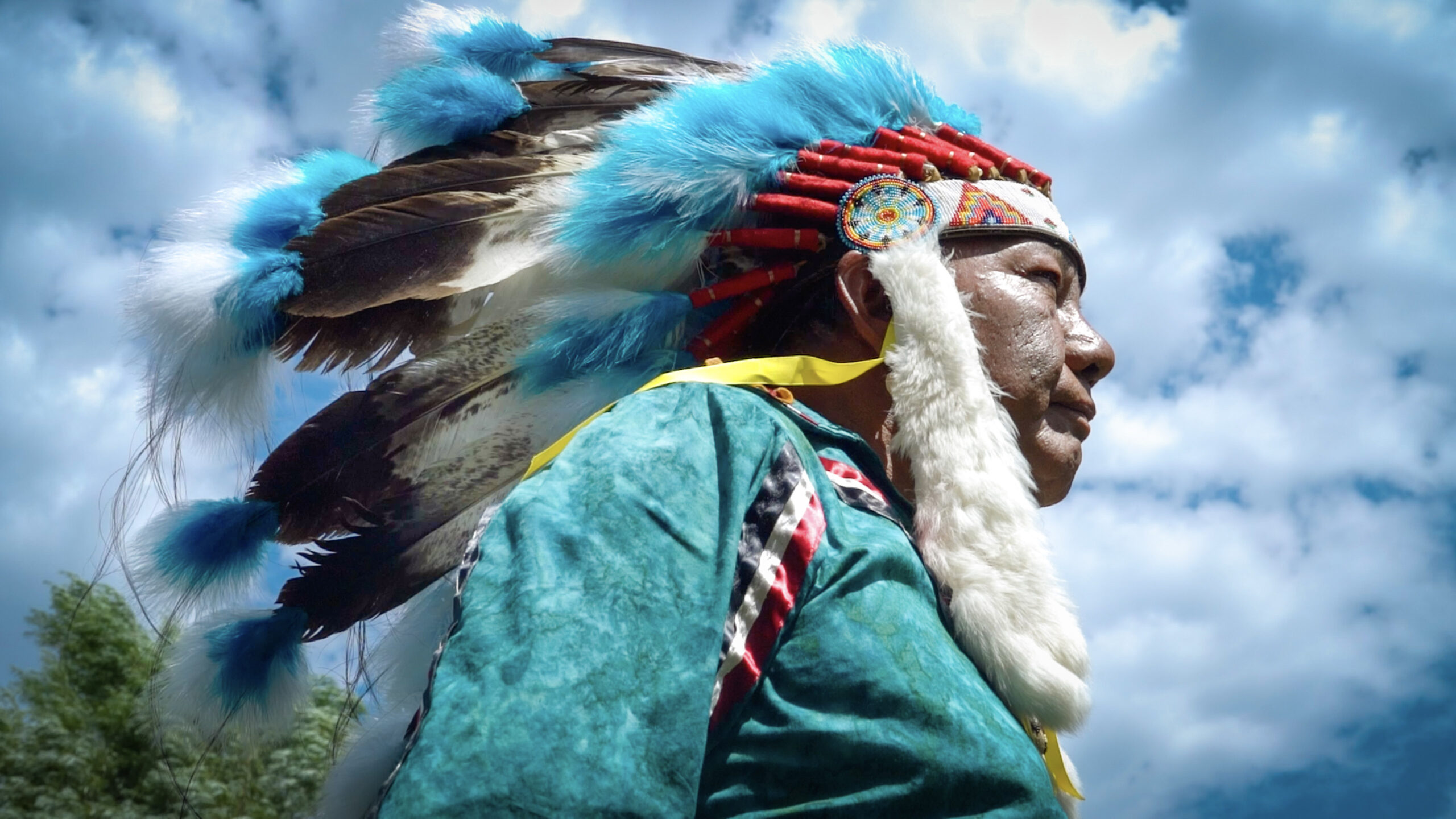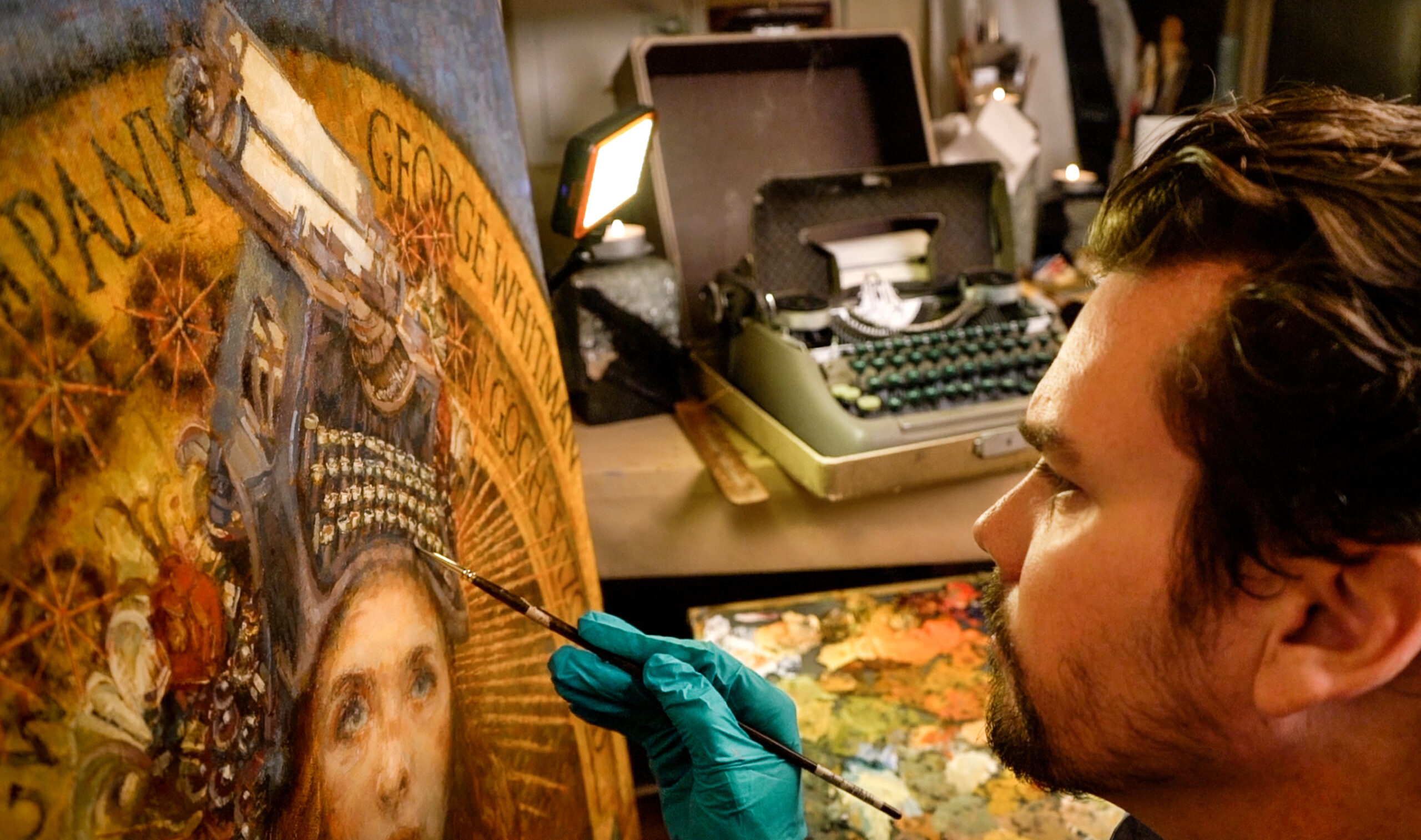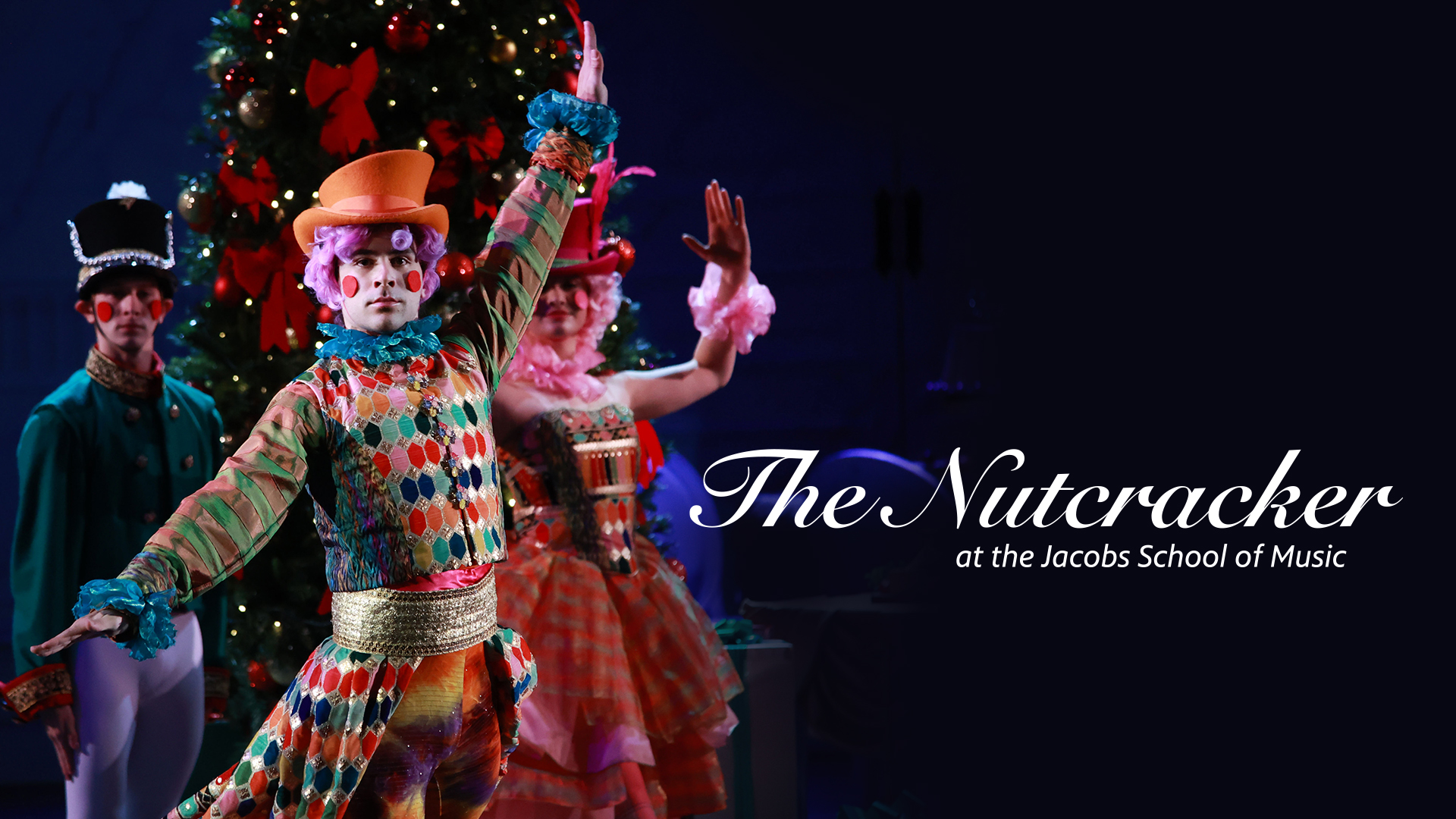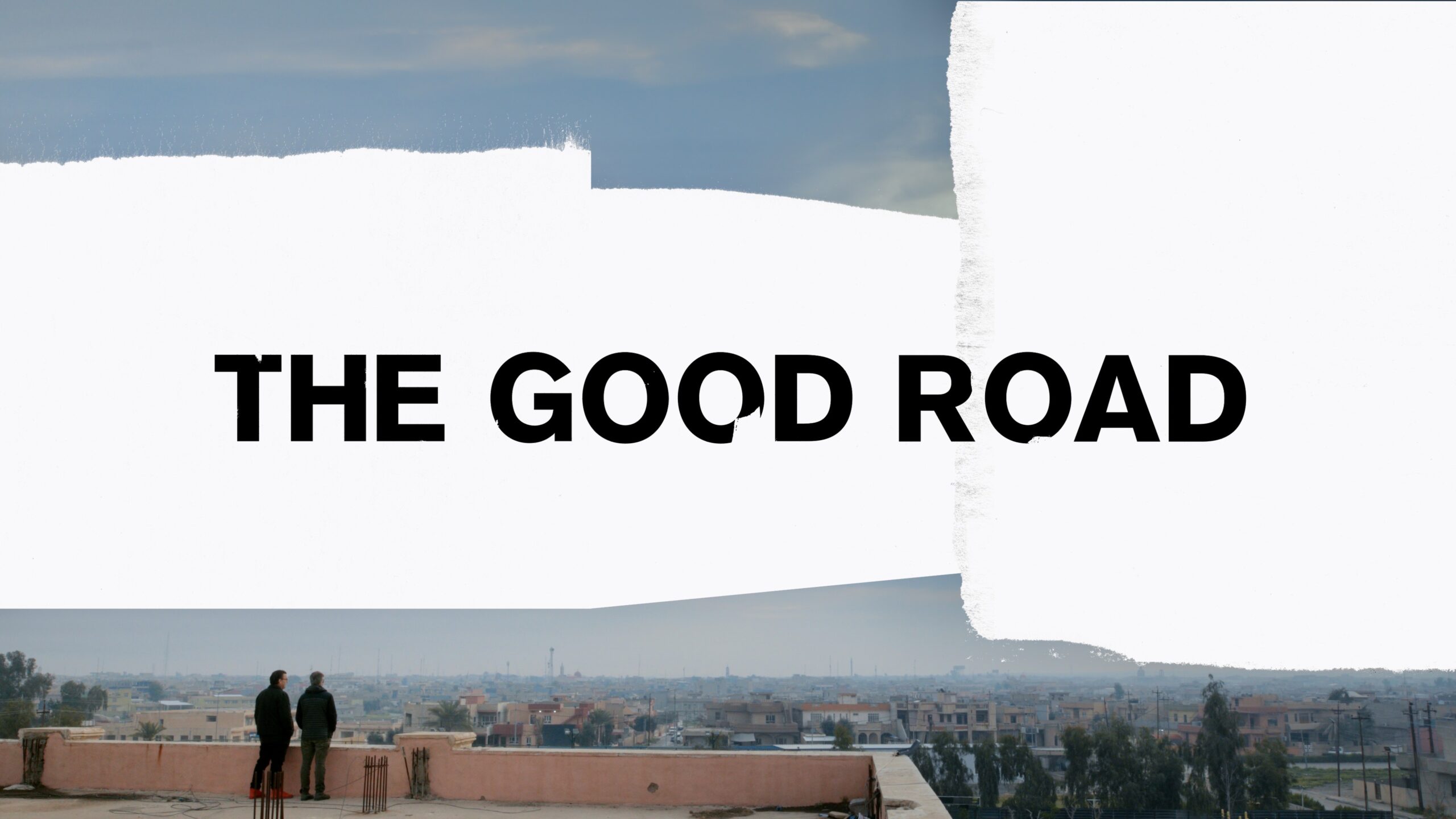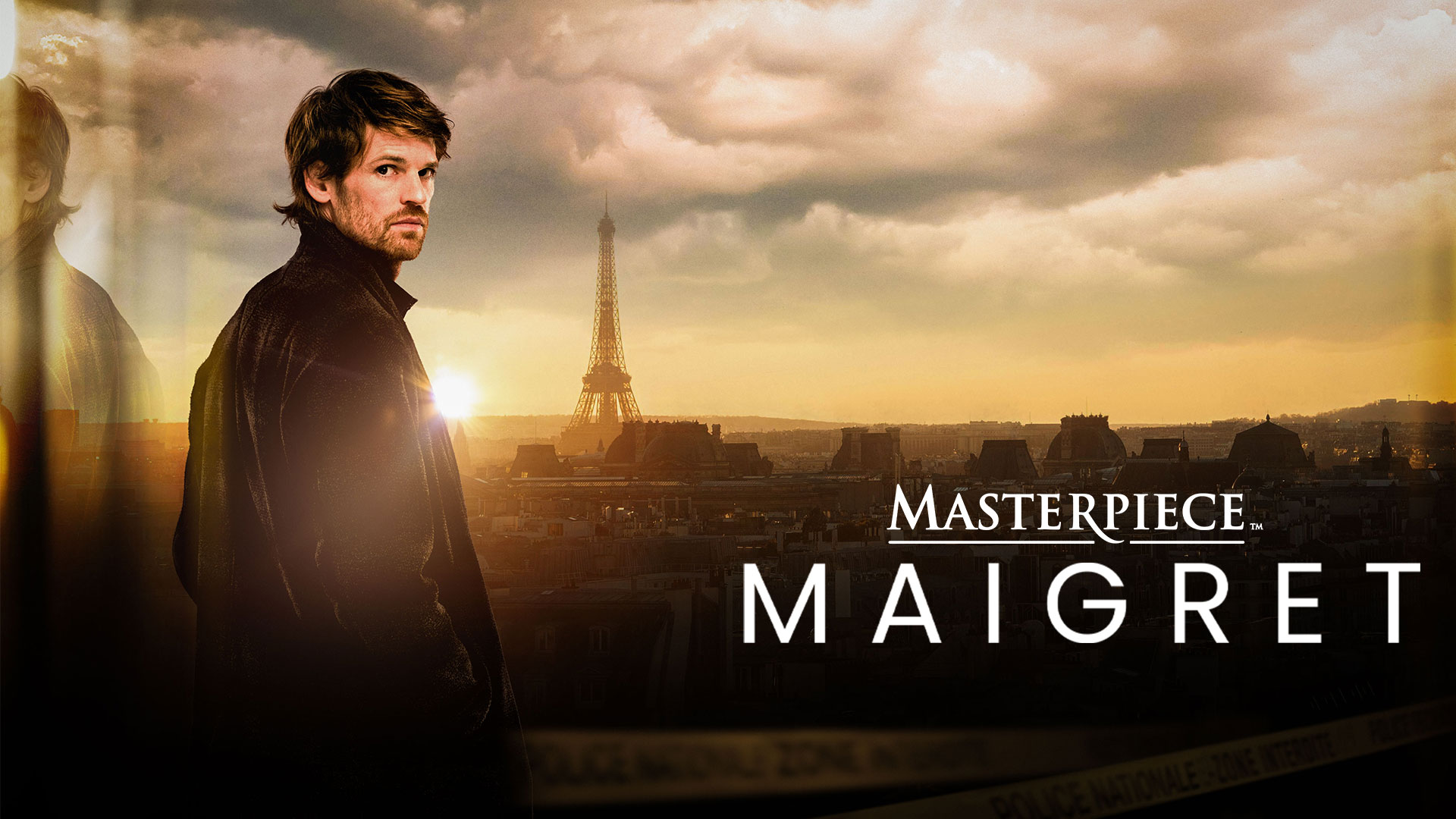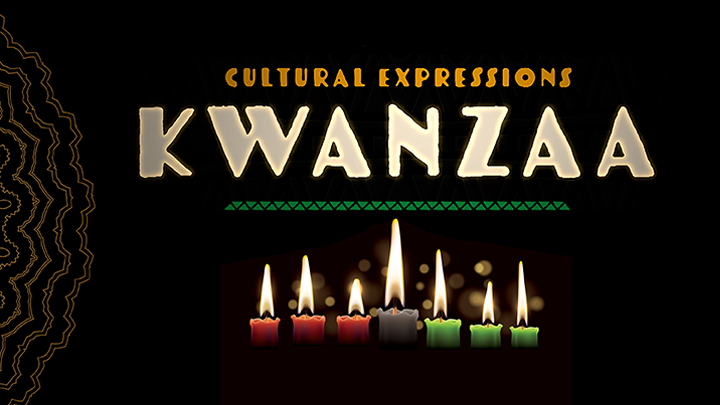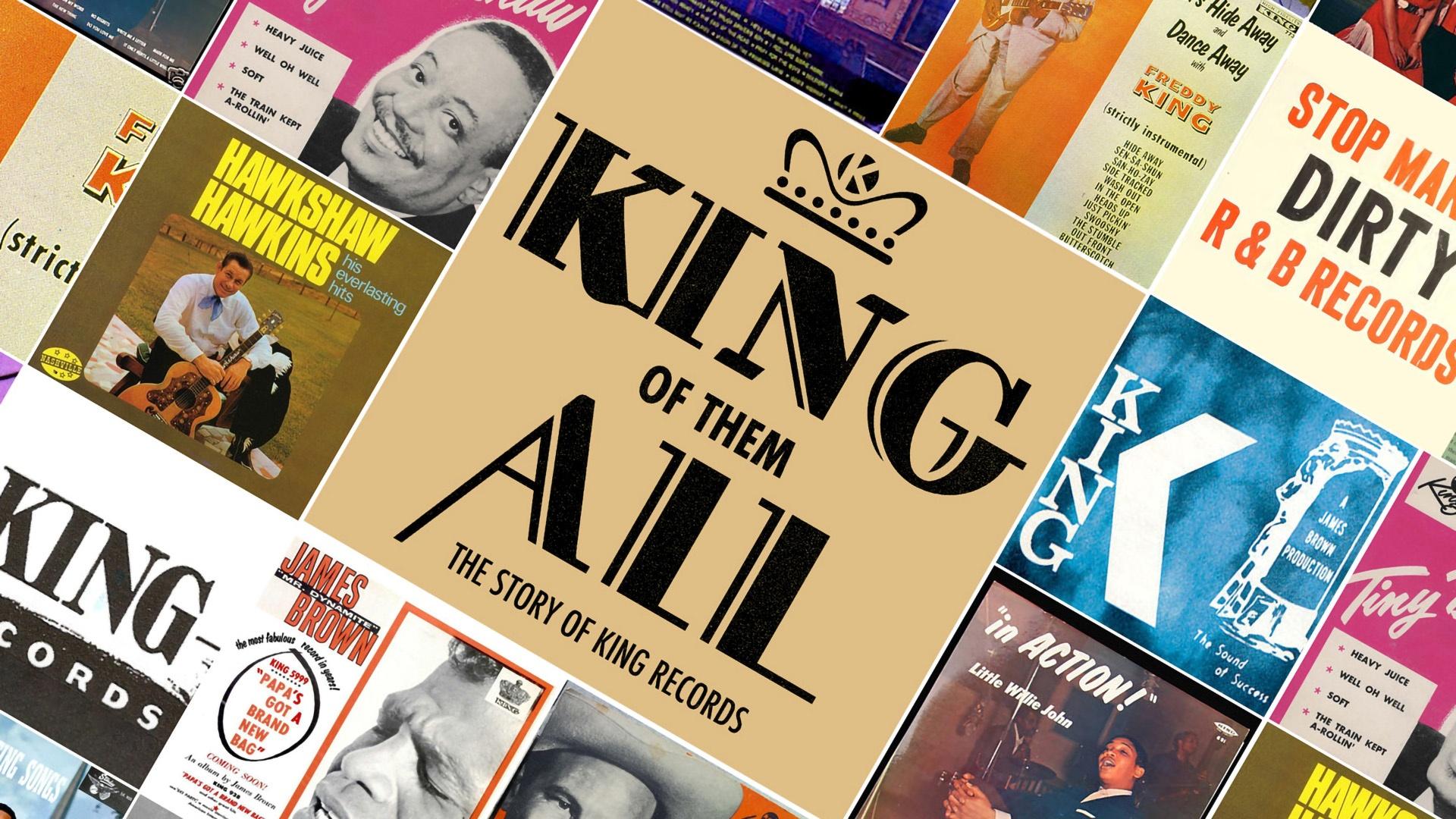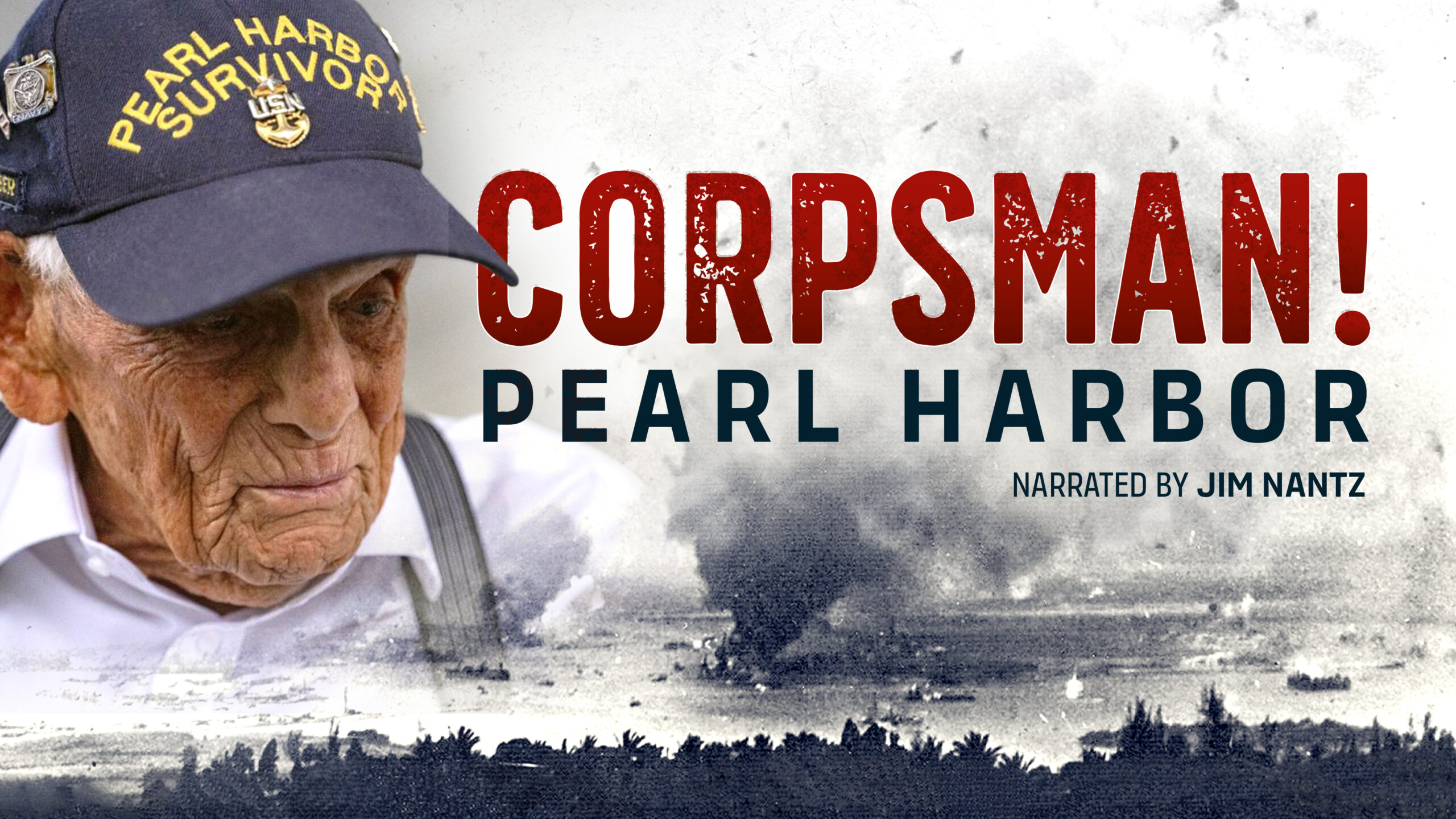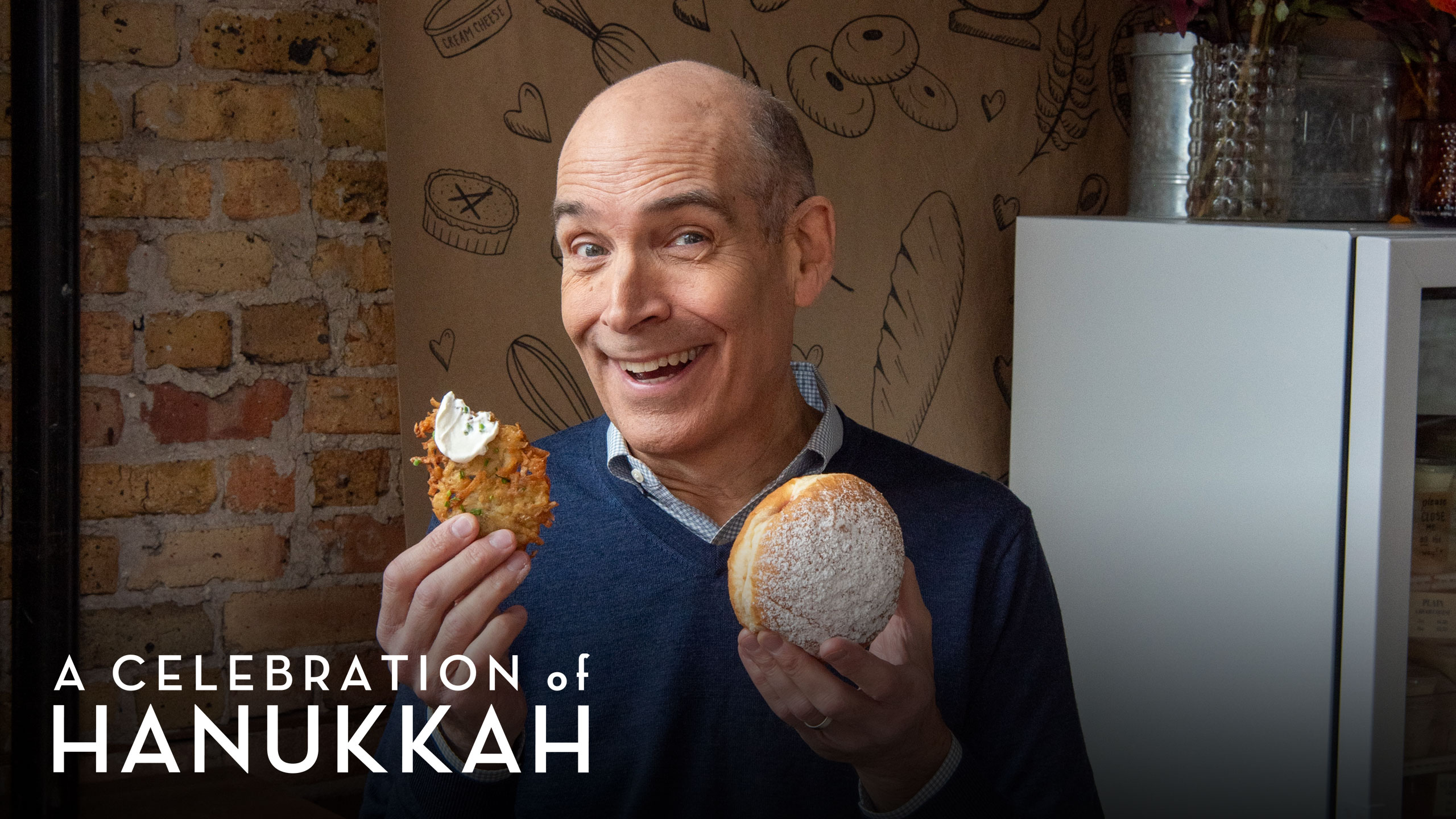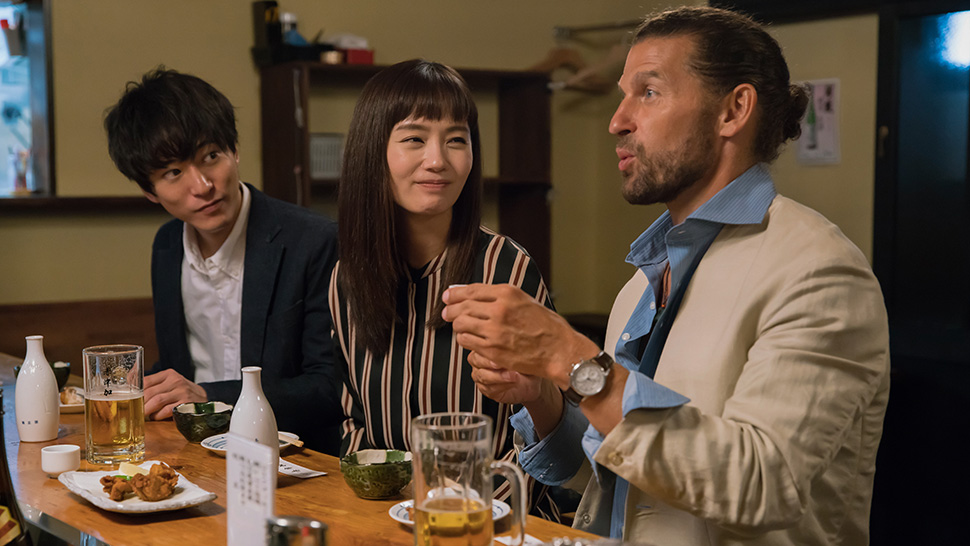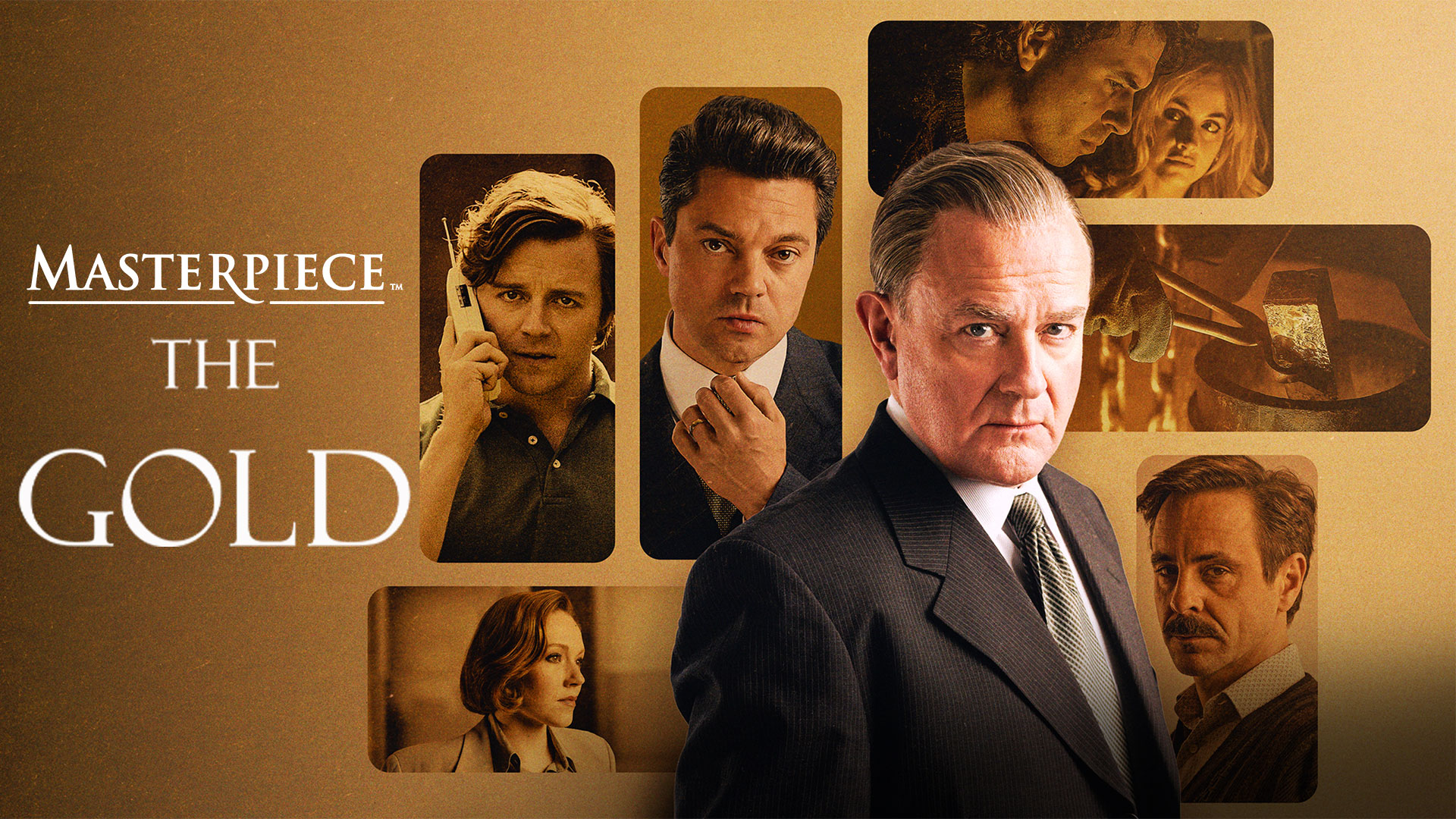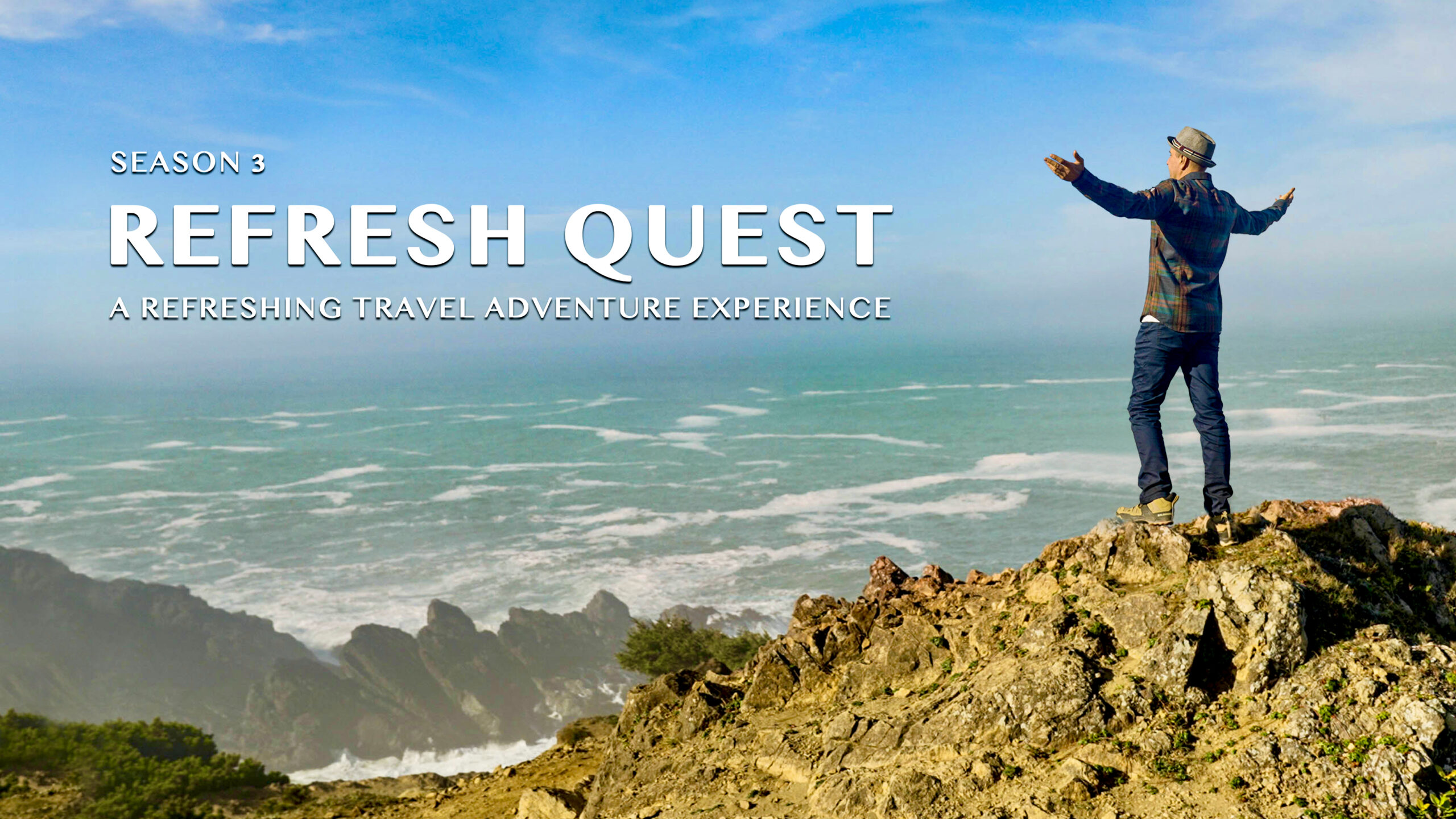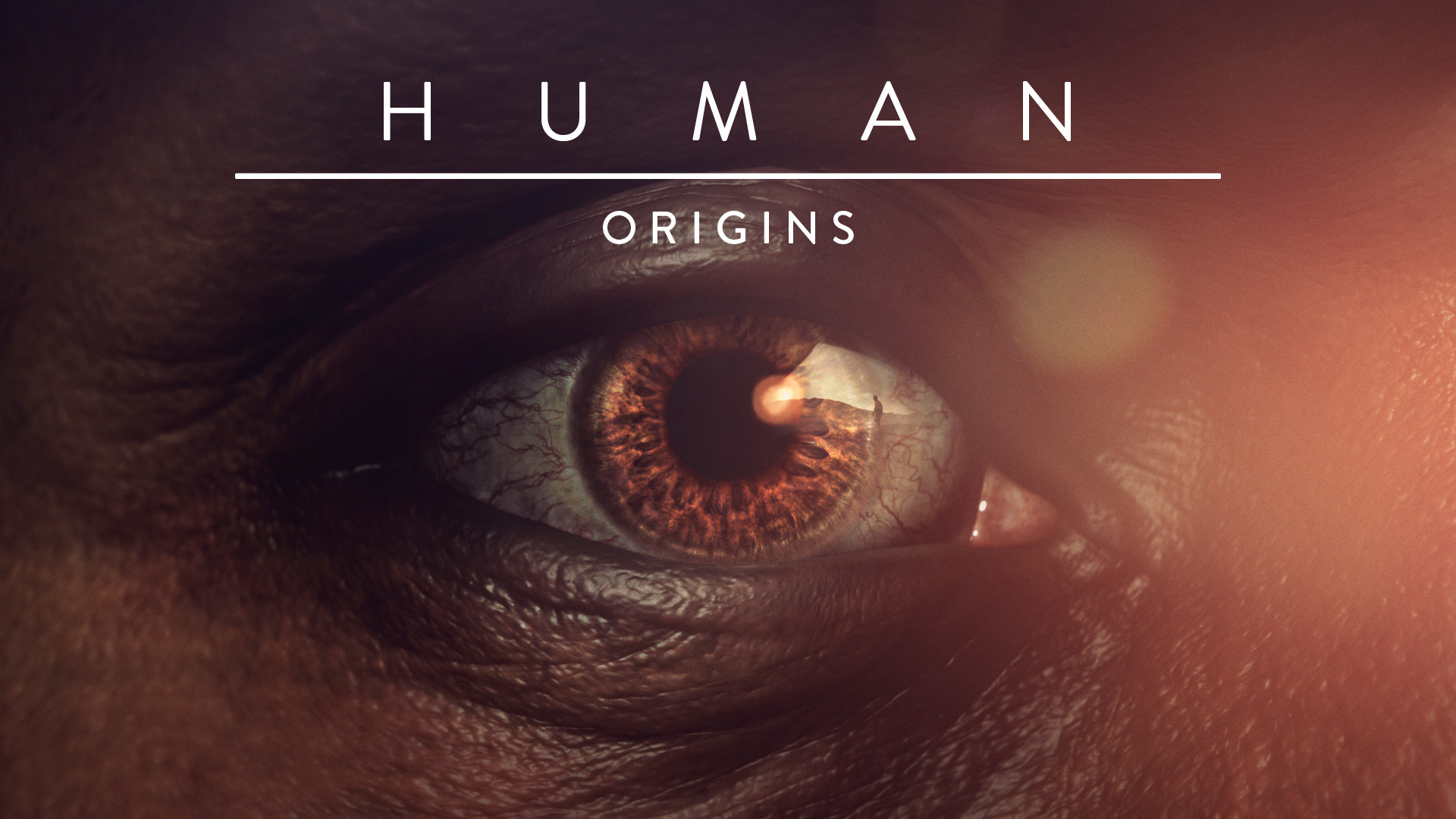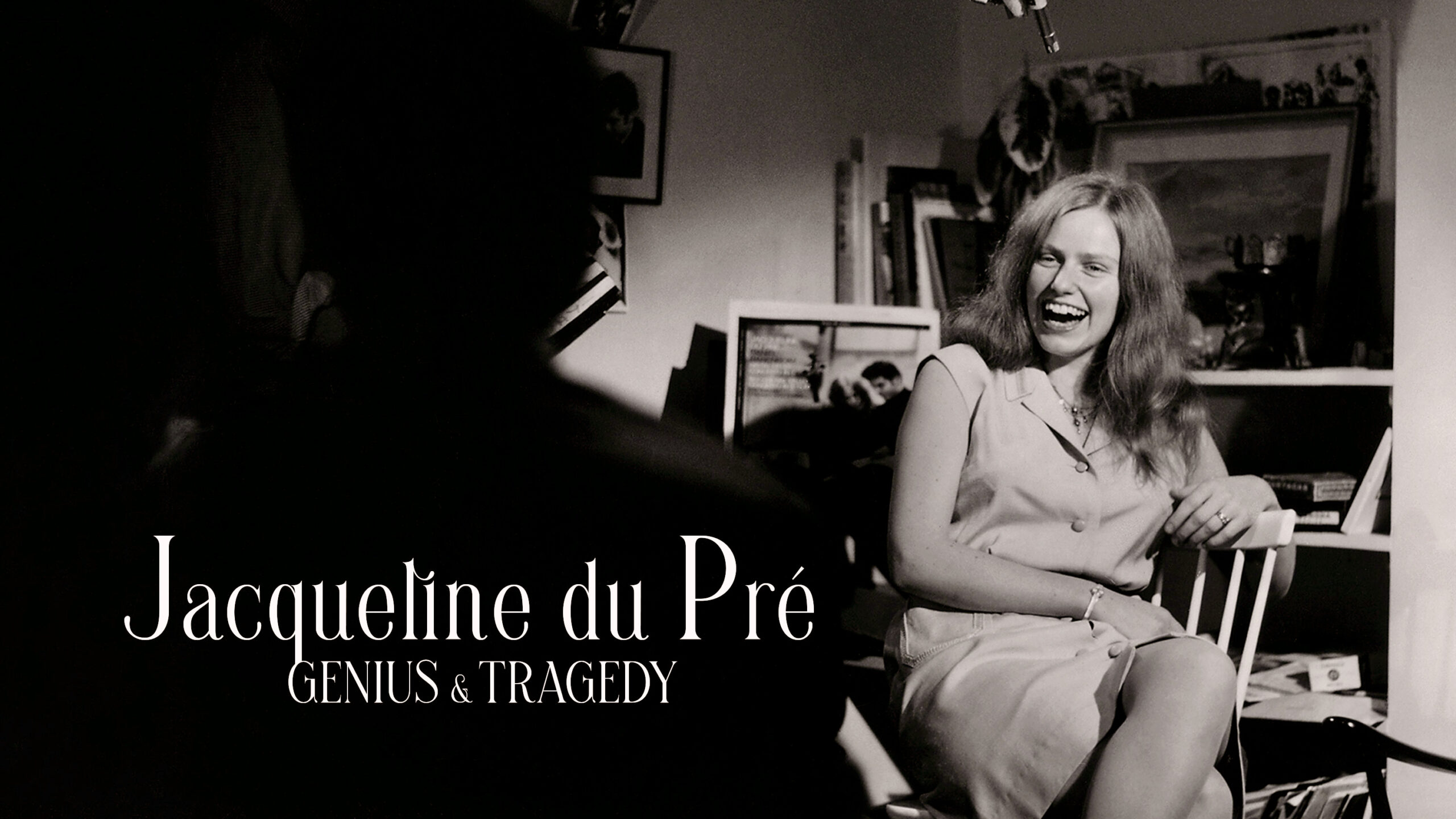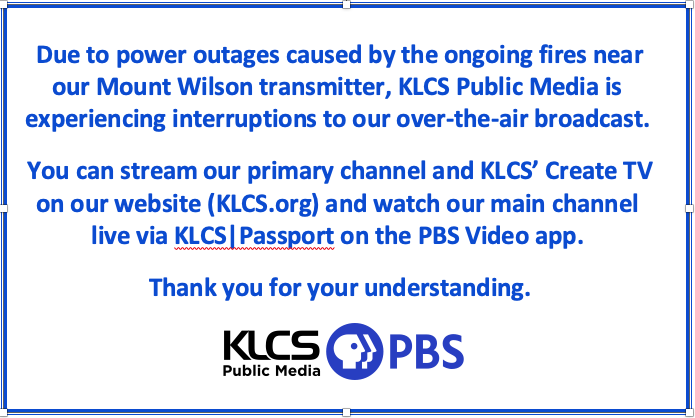Have you ever gone to the Louvre Museum in Paris, France, to see the Mona Lisa, only to wonder what the story was behind the painting? Utah-based painter Sean Diediker has too, so he came up with the idea of “Canvasing the World.” It blends travel and painting, but in addition, the viewer gets to see the stories of the people Sean meets in each episode. He takes us on a journey of discovery and shares with his viewers the result of that trip – a painting representing the people he’s met. We talk to Sean about how the show came about, his connection to Los Angeles, and what Season Two will look like.
Sean, you said in one episode of your show that you, pretty much, had no backup plan, your goal in life was to paint.
It was a way to say I was all in. I wanted to do medicine, I didn’t think I was smart enough and I don’t know if I wanted that lifestyle. I love biology, I love how things work, and how things are put together in systems, but it didn’t quite give me that creative spark that I needed. When I started painting, I was all in, it was like I’ll either make it or (laughs) have to figure something else out, but I didn’t look back after that.
What was your path to be a painter, how did you know this what you wanted to be?
When I was a high school senior, I copied a cowboy out of a National Geographic with just black ink wash and I was so stimulated by the application of that and what it did, taking nothing and making something through my hand. It was very addictive. And I got a good response from my very first thing, like “I like this”; I want to see if I can take it further.
Do you have formal painting experience?
Yeah, I went to Brigham Young University and got a degree in Fine Arts. But with that said, I feel like I’m primarily self-taught because at BYU, I pretty much took Vermeer and Rembrandt books and just copied their stuff. I probably owe the library money because every Rembrandt and Vermeer book has paint marks by accident as I’m thumbing through them trying to articulate the way they did.
If you start a painting, you just want to finish it. What’s the longest you’ve been in the studio to finish something?
It just depends on the size and how much information’s in it. A one figure piece will take a couple weeks, whereas a 12-figure piece that could be six months. So, I’ve been six months in the studio with one piece. I try not to do that as much anymore. It’s an endurance race for sure. No matter how good the composition is, or how good you think the painting will be, about a couple weeks in, you start to second guess all of that.
At the end of the show, we see a gallery with a bunch of paintings from the series. Is that a real gallery or just to showcase the work?
That’s just to showcase the work, it’s a digital gallery. I do have those, but we didn’t film those. I have a bunch of paintings at the Springville Art Museum and a gallery in Santa Fe, but we wanted to showcase only the “Canvasing the World” stuff, so we found, digitally was a better way to do it. Turns out, glare is a real problem when it comes to paintings. When you’re filming paintings, that’s the hardest part after they’re varnished, they glare, so they’re very hard to film. That’s why the digital solution worked much better.
Do you paint with oil or acrylic?
Oil.
That’s why you wear gloves, right?
Cadmiums are deadly if you get them on you too much.
I find the hardest part of painting, is trying to paint hands, fingers and someone’s face. Do you think that is something we can learn or do you think someone has to have a natural gift to paint?
No, in any skill or trade or craft, if you put enough hours, you’ll get better at it. Rembrandt was crap at hands too. I struggle with fingers as well, but you’ll notice Rembrandt just made them in bulky strokes, whereas DaVinci, he elongated the fingers because he studied the hands much more and did extensive studies and Rembrandt just didn’t do it.
You’ve obviously been to the Uffizi?
Yes, I lived in Florence for about four months and went to the Uffizi everyday. I even know where the little secret door is.
What was that like the first time you went there and saw a DaVinci painting from, like, 500 years ago?
Well, as glorious as his finished works are, I was more interested in the cartoons, the underpainting, because that showed me first hand, “Oh, this is how he built it up.”
So, every painting you do has a sketch underneath?
Yes, sometimes it’s light pencil, sometimes it’s charcoal, and oftentimes it’s just oil sketches underneath. Depends on the complexity, and how big it is.
It’s easier to copy a photo, but harder to paint from one’s memory or mind. Is that the case for you?
Yeah. I make full use of all the digital tools available now. I have Procreate on my iPad, so if I have an image or a portrait and I want to manipulate it, or change whatever parts of it, elongate or colorize certain things. I do a lot of my sketching digitally now to actually figure out “Oh, this will translate to a painting better” rather than, I think, if you just use a photo only, I don’t know, it’s hard to make a photo feel like a painting. You have to be a painter first and foremost. I’ll go through my art books, if I am using a photo reference, I’ll go through my Van Gogh books, my Rembrandt books to remind myself, “Hey, this is a painting, not a photo. Treat it as such.”
Your producers are in L.A., what was your path to doing this show on TV?
Royer Studio is my primary partner and producer, Bruce Royer, I met him just by chance passing through L.A. We had a bottle of wine, and it was like he became my brother right then and there. We’ve traveled the same way; we enjoyed the same passions and he’s the one who really help get the show off-the-ground.
You happened to meet him?
I do a lot of travel on trade, so when I’m travelling up and down the coast or wherever, I’ll reach out to people who have a bed and breakfast, or small boutique hotels and he happened to have a bed and breakfast. So, I offered to trade a print for a couple nights at his place and we just got to talking. It works great, I’ve done it all over the world. And it’s got to be a small place, the big places never do it. People like exchanging craft, because usually if they own a boutique hotel, they’re proud of that and you’re proud of your work and it’s just a nice exchange and I’m still friends with most people I’ve done trades with.
Do you have much of a connection to L.A.?
I grew in Newbury Park. I went to Utah not long after I graduated high school, so no, not long really, other than trips on the road.
What was the initial concept and theme of your show?
The idea was to show the back stories to my paintings, first and foremost. And roll that into a human-interest documentary disguised as a travel show. The idea is to be completely open and non-scripted, show up in a place and just see where that unfolds and then at some point get inspired by someone or an event and do a painting on that and that’s what we reveal at the end of the episodes.
In the Heidelberg episode, you did say you traded for a hotel rooms. You still do that?
Yeah, in fact, in Heidelberg I stayed at Die Hirschgasse Hotel and a fine woman named Allison offered me a room for 10 days. When I first went and filmed it, I was just a guy with a backpack, I hardly knew how to use a camera; that was my second week in Europe. So that’s why Heidelberg became a destination, because I actually had a place to sleep.
You never hosted a show before “Canvasing the World.”
No, I was just a professional artist, just painter with my galleries.
You were your own cameraman? In the show you did have shots of yourself.
Once I met Bruce, we had to go back to some places, like Paris, and Bruce was behind the camera.
Have you stayed in touch with the U.S. expat, the street philosopher in Heidelberg?
Yes I have, I spoke to him a year and a half ago and he’s doing well as far as I know.
In the episode with the Australian homeless couple, I was sad to learn that Sherlock died after you filmed. Are you still in contact with Jules?
We all were. Last time I was in Sydney, I saw Jules. I was in touch with Jules, that was a couple years ago. Sherlock had kids that were out in L.A. and his daughter reached out to me years ago in interested in that drawing I did of him
Is Jules is still homeless?
After Sherlock died, he was the anchor for those two, I think she got an apartment, cheap housing inland.
I also noticed that you don’t have sponsor credits on the show; funding seem to be the toughest part of producing a PBS show, how have you dealt with that?
We’re always looking for a sponsor. When [the show] started going on the Covid hit and that dried up a lot of stuff and halted production. We found other ways to raise money and it’s more of a labor of love. We both just love being on the road and sharing the stories.
So what have you been doing since 2020?
We got almost three-quarters of the way through Season Two before Covid hit and that completely shut us down, we’re trying to wrap up Season Two this year. So we’re hoping to have it on the air January-ish.
Do you plan to do another season after that?
We hope so. Getting it started is the hardest part, then getting it on the air and now that it’s on the air, it seems to be well-received. I think we would keep going as long as this mechanism still works.
Do you still trade a painting in each episode with a hotel?
That doesn’t always happen either; that was my personal journey. Sometimes tourism boards will fund, so they provide a hotel. Sometimes we’re sleeping in a tent. We had that in Patagonia, the glamping situation. That was great.
In Patagonia, you said you would be a photographer, you didn’t paint something there.
That was more of a timing issue, that was one of our last episodes and paintings take time. On location you can take five or 10 days, paintings can take a month. I do love photography and I thought it would be interesting to see how that, as the final medium, would translate.
Do you have a favorite place that you’ve gone to?
Sydney has always called my name; I lived there about 10 different times. Sydney would be my personal favorite. When we were there, we were there three months filming, I was painting there. It’s how I dodged winter, since I’m in Utah. I’m not a big a fan of the cold winters, so Sydney was a good solution.
How often do you paint out in public. Does anyone recognize you from the show?
I don’t paint in public, plain air painting; I’m solitary when I paint. I’m not out there on the streets doing it. I usually collect the content, get inspired and I bring that back in the studio to articulate it. A lady that did recognize me; I was doing a birthday trip in Puerto Rico, I was staying at this community hostel place and I walked in and the lady that ran it said, “I know you. You’re a painter.” I said, “Oh, really?” She said, “I get three channels, sometimes four if the wind is right.” And my show happened to be on when the wind is right, and she got it. We became friends and it was a great experience.
You paint for your birthdays?
I do an unscripted journey just for myself. Usually on my birthday for a few weeks. I don’t really have a destination, just go east, north, south, west. See where it takes me, see who I meet.
I loved the Germany episode; it seemed very rich.
I will confess that I didn’t really know what I was doing there, that was just me and the backpack; I was still learning the camera equipment and the mics. But once I met Bruce, and he’s been doing it 30 years professionally, it was like, “Oh, that’s how you do that!” He definitely upped the production value, for sure.
What’s been some of the response you’ve received from viewers about the show?
They too like seeing the backstories. I feel like when people go to museums, the painters and the subject are long since dead, but wouldn’t it be nice to know what the secret was behind the Mona Lisa smile, what the real relationship was? And there are small cameras we can take and we can record those interactions, then seeing that final result and the artwork. I think it brings a lot more understanding and I think people can attach themselves to the paintings more when they truly understand the people behind them. Like the Sherlock episode would be a good example of that.
What’s in Season Two?
We’ve got Kauai, Taylor Camp, which was a nudist colony in the late ‘70’s. We interviewed a bunch of people that were part of that and they’re still around and they still live nearby there, but they built families and homes. We did one called “Canvasing Creatives,” which [features] people who are masters of their craft, a writer, an illustrator. I got one called “Desert Painters,” all my favorite desert landscape guys, so we’re celebrating the West in that one. And we’re going to be working on Hong Kong and Scotland in September.
So it’s not shot yet?
Most of it is, but Hong Kong and Scotland have not been. The other ones are pretty much in the can.
Any tips on painting?
If you truly love the craft, don’t necessarily try to make money doing it, just do it for the love of it. If you try to monetize and you paint blue dogs, the gallery only sells blue dogs and they expect blue dogs. I’ve head this time and again from other painters. They become manufacturers of their own work and they get bored and don’t want to do it anymore. So, paint what you love, don’t worry about selling it, and if it’s truly honest, money will follow. If it doesn’t, you’ll still love it.
I didn’t realize people try to monetize it; I was thinking technical tips.
You were talking about going all in before. If you’re all in, you do have to figure that out, otherwise it will remain a hobby, which is fine. You do have to figure out the business aspects of galleries, how to sell prints, all that stuff.
I interview a lot of the PBS chefs, many generate additional income streams with a food tour to the places they go to film. Do you think about something like that or about teaching a painting class?
I haven’t really; I don’t want to be anybody’s tour guide necessarily. But with the right group of people, yeah it would be fun to travel abroad and take various art lovers to places and show them the spontaneity of not necessarily having an itinerary, and how to find those gems without having to go with a big tour group. It would be fun to be a director of that every now and then, but I definitely don’t want to be a tour guide. (laughs) Believe it or not, contrary to popular opinion, I’m more of an introvert. So when I’m in the studio, it’s just me and that’s kind of my meditation time.
Canvasing the World with Sean Diediker airs Wednesday evenings on KLCS’ Create TV. Visit klcs.org/schedule for the full broadcast schedule. Read the full interview with Sean at our website: klcs.org
You can learn more about Sean, the show and his art at canvasingtheworld.tv or follow his social media: he’s on Instagram (Instagram.com/seandiediker) the show is on Facebook (facebook.com/canvasingtheworld).

